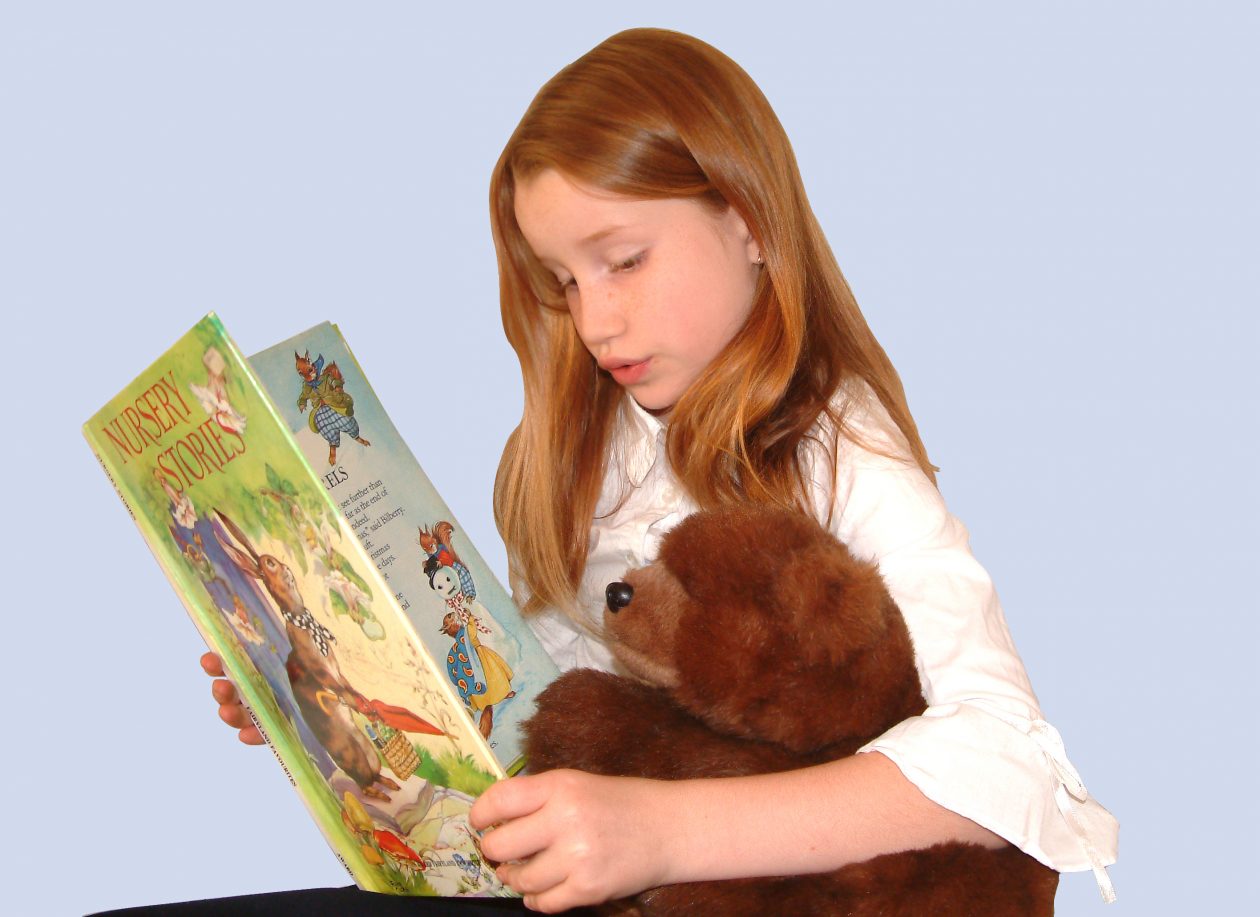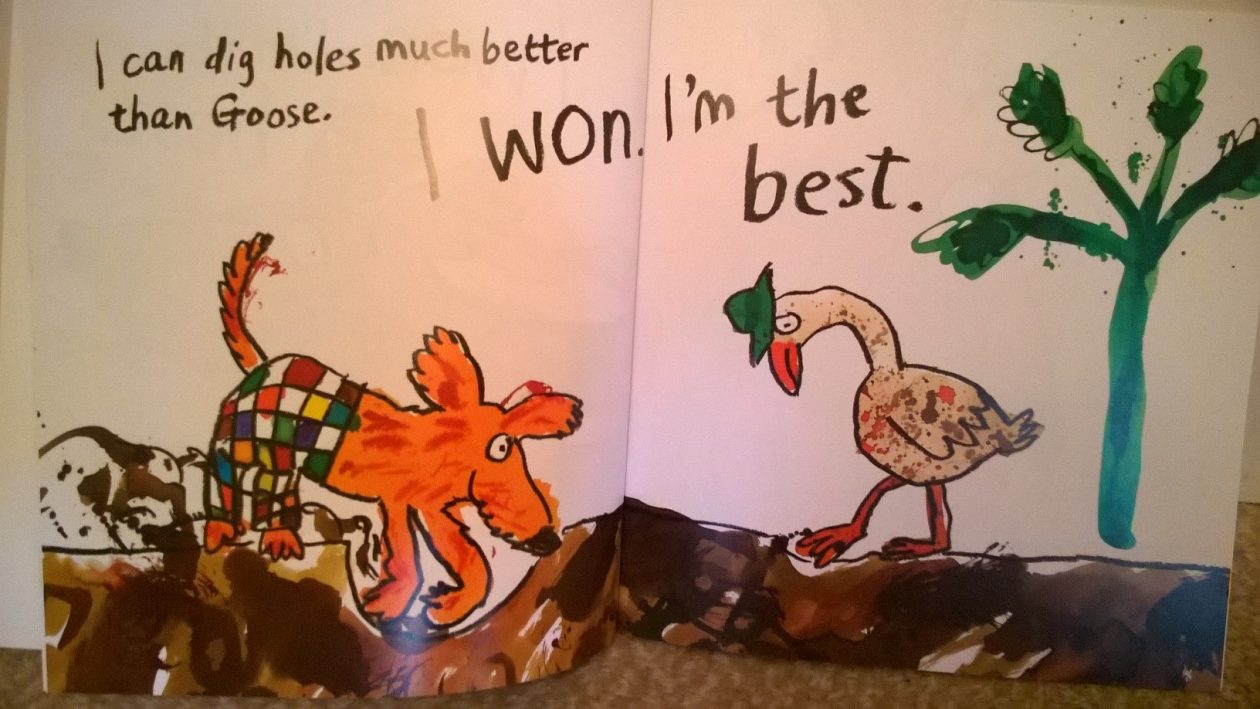I love a good story! Whether it’s in a book, a TV show, a movie or even a friend telling me about their weekend – stories are what keep me interested. How boring life would be if we just told each other the straight facts.
Over the last couple of weeks, our lectures and workshops have involved looking at all kinds of children’s literature, and thinking about how we might use these to support children’s language development (talking and listening, reading and writing.) Continuing with this, I have decided to look at a picture book in more depth and explore some of the ways that I might use it within the classroom.
The book I have chosen is: “I’m the Best” by Lucy Cousins
As you may be able to tell – this book is aimed at younger children (early years or early primary.) It is very eye catching and appealing as it uses bright colours and bold illustrations as well as simple text which describes what is happening in each picture.
Before reading the book, I would spend some time with the children, talking about the front cover – identifying the key features such as the title and the author. I would also ask them if they could guess what the story is going to be about, supporting them in looking for the clues. I may also ask the children to think of things that they are ‘the best’ at.
After that, it’s time to begin reading. This story is about Dog and his friends. Dog is good at identifying the things that he can do well, but he continually boasts that he is ‘the best’!
While reading, I would encourage the children to join in with the repeated phrases (“I won. I’m the best.”) I would also ask the children to look at the expressions on the faces of the characters and think about how they might be feeling. Why do they think that they are feeling that way? Do they think that Dog is being a good friend?
As a reader, I would ensure to use intonation and expression in my voice to exaggerate and emphasise the meaning behind the text.
At the half way point in the book, the story changes. The other animals decide to show the dog that he isn’t the best at everything and that they are the best at certain things. Before moving on to this second half of the story I would ask the children to predict what they think might happen next. Doing this can support children’s logical reasoning skills. It may also help them to think about what they may do in that situation.
As we continue, I would again ask the children to think about how the characters are feeling. What has changed from before?
Don’t worry – the book has a happy ending! Dog is feeling sad that he isn’t the best at all of the things that he thought he was, but his friends reassure him that he is the best at being their friend and they point out the things that make Dog special.
Feelings and the language of emotions can be difficult for children to master, which is one of the reasons why I really like this book. It is obvious how the character is feeling (through the illustration) and at the turning point in the middle of the book, the characters express that they are feeling sad. The conversations between the children and the teacher, as they read this story could also help to develop the children’s vocabulary and language skills in this area. Learning the language of feelings can help children to manage their emotions, or approach someone if they are needing support. These are critical life skills.
I feel that this book would also be a great starting point for discussion about how everyone is different and special in their own ways. This could link into activities to do with the Growth Mindset (Dweck 2012.) The children could be asked to identify something that they believe they are good at, and something that they would like to improve.
Another direction would be to use this book to support learning about social skills and how to be a good friend to others. A lovely activity (which I have seen on Pinterest) could be to encourage the children to write down/ say something about another person that they do well.

Following story time, I would provide opportunities for the children to explore and extend the story by themselves. I would create a ‘story table’ with puppets or props from the story so that the children can role play or play out the story in a small world setting. I would also display some of the pictures from the book in the art/ creative area so that the children may be inspired to create their own illustrations. A ‘word wall’ could also be created to display the new vocalbulary that children have learned. These new words may not necessarily come straight out of the book (as it uses fairly simple language) but also from the discussions that have arisen.
I would ensure that the story book was readily available for the children in the reading area and I would also re-visit the story multiple times, so that the children become familiar with it and can begin to think of new questions or comments.

One of the key points that I’ve picked up from our Language lectures is that it is absolutely VITAL to instil a love of reading into our children and to continue to nurture this as the children grow and develop. I am a keen reader at home and I have always loved story times in nurseries. I hope to bring this love into my teaching with primary school children.
It is at story time that the teacher’s enthusiasm for books is transmitted regularly to children. – Ann Browne (1996)
During my teaching placement I was able to see how much the children enjoyed and responded to the class novel, however this was just ‘fitted in’ when there was a free 10 minutes. As a teacher, I hope to be able to devote appropriate time and space to stories – showing my children how much I value reading and a good book.




As always some great points made. I did start wondering about the phrase ‘instilling a love of reading’. This could be construed as ‘top down’ so I suppose creating a pressure free environment, where reading (and not just books) is free from restriction or rules would be one approach. Might be something to discuss at #uodedu book club? (Btw it is on tomorrow!).
Hi Richard, thanks for your comment! I see what you mean about my phrase ‘instil a love of learning.’ I think what I mean is more that we should be modelling our own positive attitudes towards reading. As you say, we need to provide the right environment and opportunities for children to engage with reading in their own way. In that same vein; I am a fan of Pennac’s ‘Rights of the Reader’ which removes the ‘failure’ from reading.